featured
The Tale of the Hippie Trail (2022)
Published
11 hours agoon
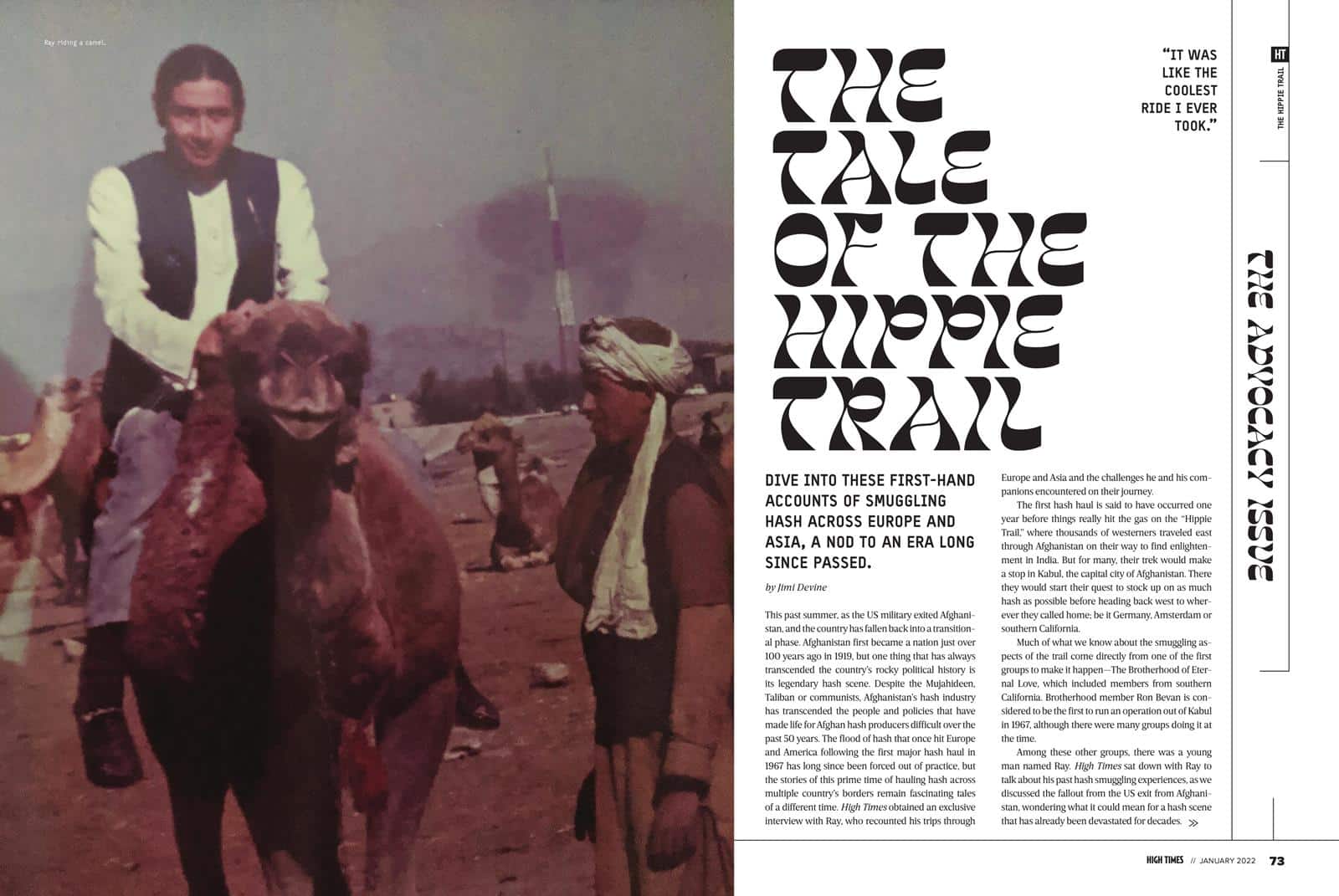
This past summer, as the US military exited Afghanistan, and the country has fallen back into a transitional phase. Afghanistan first became a nation just over 100 years ago in 1919, but one thing that has always transcended the country’s rocky political history is its legendary hash scene. Despite the Mujahideen, Taliban or communists, Afghanistan’s hash industry has transcended the people and policies that have made life for Afghan hash producers difficult over the past 50 years. The flood of hash that once hit Europe and America following the first major hash haul in 1967 has long since been forced out of practice, but the stories of this prime time of hauling hash across multiple country’s borders remain fascinating tales of a different time. High Times obtained an exclusive interview with Ray, who recounted his trips through Europe and Asia and the challenges he and his companions encountered on their journey.
The first hash haul is said to have occurred one year before things really hit the gas on the “Hippie Trail,” where thousands of westerners traveled east through Afghanistan on their way to find enlightenment in India. But for many, their trek would make a stop in Kabul, the capital city of Afghanistan. There they would start their quest to stock up on as much hash as possible before heading back west to wherever they called home; be it Germany, Amsterdam or southern California.
Much of what we know about the smuggling aspects of the trail come directly from one of the first groups to make it happen—The Brotherhood of Eternal Love, which included members from southern California. Brotherhood member Ron Bevan is considered to be the first to run an operation out of Kabul in 1967, although there were many groups doing it at the time.
Among these other groups, there was a young man named Ray. High Times sat down with Ray to talk about his past hash smuggling experiences, as we discussed the fallout from the US exit from Afghanistan, wondering what it could mean for a hash scene that has already been devastated for decades.
Hop In—We’re Going Smuggling
The days before Ray’s first trip to Afghanistan were filled with proper hippie business. “We went to southern Oregon in the late ’60s and for whatever reason out of pure synchronicity a bunch of us from northern California and southern California all ended up in this one house in southern Oregon,” Ray told High Times.
The group decided to take things to the next level and looked to start a commune. They spent some time hunting for a property, but after some hiccups with the search, they regrouped in California in 1968. A lot of the people that originally tossed that idea around remain friends to this day after originally finding each other all those years ago.
Part of that group included some friends who had already been smuggling hash from Afghanistan a year or two before that, and they had just brought back a load. In those days, Ray and his friends were staying in the High Sierras—the perfect place to unload some hash.
Most people associate the “Hippie Trail” with the image of a classic Volkswagen bus and a Hanomag Camper that rolled up to their spot in the same hills that was also very popular with other hash smugglers, such as Darrell. “He came, we unloaded it there, and it took a while. And after he got what he thought was the load amount he goes, ‘Okay, you guys can have the rest.’ And so we picked away at it because it was in the framework,” Ray said, “We had to use all kinds of tools we implement to dig it all out but I think eventually we got like another 10 pounds.”
This would be the first time Ray mentioned the man that he eventually partnered with to make the travel east. “So you know we are quite thrilled to make a connection with him. This is Long Beach, brother, I can give you his name because he’s no longer with us. Well, he had many names, but we knew him as Darrell,” Ray noted with a laugh.
Before connecting with Ray, Darrell had already made two or three trips. He was always a driver, and for good reason. In this critical role, he was the main person who drove from Holland to Kabul and back, through every border. He didn’t even need a map when he was on his runs.
Eventually Darrell shared his next plan with Ray: “Here’s what I want to do next time because I’m gonna have another Honomag, but also I’m going to buy a really nice motorhome,” Darrell told Ray at the time.
The motorhome was called a Revcon. It was the top-of-the-line in 1968 when it was designed. It had an aerodynamic aluminum body, and the 26 rails that ran the length of its frame were a hash smuggler’s dream.
“Very cool, very modern, front wheel drive. And he goes ‘I’m gonna buy this and we’re gonna, this is the vehicle we’re gonna make special rails that go inside the rails and we’ll have little hooks to pull it out,”’ Ray said of Darrell’s original plan.
Ray and Darrell had some friends that were engineers who helped them with building the rails. Eventually they would drive the Revcon across the country from California to New York, shipping it on to Rotterdam, Netherlands.
Darrell asked Ray to tag along for the full run to Afghanistan. “I go, ‘Sure, I’ll go slide and sit shotgun,”’ Ray replied. “It was like the coolest ride I ever took. But we were vegetarian at the time, so we were doing a lot of soups, avocados and carrot juice. We had it all decked out with the Norwalk Press, which is a real good juicing machine. We totally kept our eating habits intact.” Their eating habits would eventually earn them the nickname “The Carrot Juice Boys.”
The group prepped for their journey from Rotterdam after picking up the Revcon. They would make their way through Germany and Austria, then travel through Yugoslavia, Bulgaria, Turkey and Iran before finally reaching the Afghan Border.
That first trip would end up taking a few months, after Ray and Darrell got caught up in eastern Turkey. The Revcon’s front wheel drive engine featured torsion bars in the front, which didn’t pair well with the traffic or potholes they encountered on their journey. They lost control of the Revcon for a second, but were able to come to a stop in the center median. “Eastern Turkey is definitely the sticks, very isolated and very desolate,” Ray said of the breakdown.
When you break down out there, it’s common to surround your vehicle with rocks. They did so before hitchhiking to the closest town. They brought mechanics back to the Revcon, knowing they wouldn’t be able to replace the bar, but could rig something to get the Revcon back to civilization.
They hobbled into Tehran, Iran and messaged home for the part they needed. It wasn’t a fast process. “So we were in Tehran for about a good month, repairing the vehicle, but everything got straightened down,” Ray said, “So we rolled into Afghanistan, probably in late summer of 1970.”
Of Science and Borders
The mission was to obtain a couple hundred pounds of hash and five gallons of hash oil. While other groups had brought hash loads back for about three years before this trip, to the best of The Carrot Juice Boys’ knowledge, they were the first people ever to bring a flash evaporator to Afghanistan. Much of the Revcon was loaded with Everclear for their grand chemistry project.
If the idea of driving across the middle east with a chemistry set seemed weird, the opulence of the Revcon stole everyone’s attention at each border crossing, simplifying getting its contents across various borders in both directions. “I mean, they’ve seen the ‘Hippie Trail’ in the VW Vans, the Honomags, but they’ve never seen anything of this magnitude in this amazing really cool motorhome,” Ray noted on the border crossings. “And of course once we got into Persia we decked it out with Persian carpets and runners and it was looking really cool.”
They were very much playing the part of rich Californians, but they would still be pulled from the line at every border. “The head custom guy would come out and just wanted to go inside and look at it and say ‘oh very nice,”’ Ray said, “It’s just amazing.”
One time, a border agent pulled out their chemistry set and pulled out a beaker. He asked Darrell and the pair what it was. “Glass,” they replied. The border guard looked at it again, nodded in agreement with their take, and put it back in the box.
Iran had some of the toughest border restrictions, but once you entered the country, the group found that it was amongst the most welcoming as they attempted to Westernize before the Shah fell in 1979. Ray emphasized that it was one of the nicest places he’s ever been to, as they spent the month waiting for car parts. “They just want to make sure you’re [not] smuggling weapons or anything, doing nefarious stuff, but all the people there were so nice,” Ray noted of Tehran. “They just were so hospitable and helped us [with] whatever. If we’d go looking for the embassy, [residents] would take us in their car, take us to their home, feed us and then take us to the embassy.”
But with a repaired Revcon, things got a bit rougher as they approached the Afghanistan border. Every hotel featured signs that warned a prison sentence of 10 years in prison for a gram of hash, and life in prison for a kilo. “They try and put the fear in you, but we got some good hash in Turkey,” Ray said with a laugh.
After getting into Afghanistan, the group headed straight for Kabul. They stayed in a fancy neighborhood fitting of rich Californians. From there, they would head to The Solan Hotel, a hotspot for hash enthusiasts and general tourists heading in both directions on the trail.
One of Ray’s favorite things about The Solan Hotel was a space attached to the courtyard where you could park your van and camp near a little park attached to the hotel. There was always an ongoing rotation of Europeans and a few Americans, and it was always a good time.
The locals did their best to keep the hippies and smugglers happy, too. “Afghanis just loved us because we had money and we were very careful about religion,” Ray said. “We were very aware of how they are and how not to trespass or do anything [that] goes counter to them. There’s just some things so you don’t mess with. You don’t eat during the day during Ramadan and walk around chewing food.”
But Ray argued that besides that kind of thing, the religion of Islam was based in hospitality. Over the course of three trips that, in total, took about a year to complete, Ray picked up some language skills. One of the things he noticed immediately was how caring and personal everything was. He noted that a lot of the conversation focused on how the other person was feeling.
Back in their Kabul neighborhood, they rented out a two-story mansion and set up the hash lab. They would do a lot of the extraction work offsite and then bring the crude material back to the flash evaporator in the bathroom to get all the alcohol out. It would take them a couple of months to get the five gallons of hash oil they were shooting for.
“THEY JUST WERE SO HOSPITABLE AND HELPED US [WITH] WHATEVER. IF WE’D GO LOOKING FOR THE EMBASSY, [RESIDENTS] WOULD TAKE US IN THEIR CAR, TAKE US TO THEIR HOME, FEED US AND THEN TAKE US TO THE EMBASSY.”
Unloading the Goods
High Times asked Ray how much hash they needed to make the five gallons. Ray estimated that about 200 kilos were concentrated into the oil. He also noted the unpressed hash made for much better oil, then they hid the rest to stuff in the specialized frames of the Revcon. “The rest we had pressed up and put into the containers, the square tubes, it actually ended up making the hash look like a Hershey bar. We sold most of that in Amsterdam and I’m sure to this day, there are a lot of people there who call it ‘screw hole hash,’” Ray said.
The hash received this name when they put five to seven of the bars together and put a screw through the stack, just to tighten it up before they tossed it down the tube designed to fit into the Revcon’s internal storage system. “It was a precise measurement that we had all the patties pressed,” Ray noted on the precision used to fill each tube with as much product as possible.
As for the oil, that came out pretty great, too. The flash evaporator kept the oil at a reasonable temperature as it sweat off the Everclear used in production. “I mean, it was a black oil. But because of the flash evaporator we didn’t have to heat it in a high temperature, it was in a vacuum, so you got the real essence of really, really good hash,” Ray said. “I don’t know if you’ve had really, really good hash but it’s very floral and very sweet.”
Just like today, in order to make the best oil possible, they had to get their hands on the best material possible. Ray described the process that took them around the country from their upscale Kabul hash lab and base camp. The first connection they ever made was in Kandahar, Afghanistan.
“We used to go to Kandahar, but that was a tough place to be,” Ray noted on the trip. “Kandahar was like going back 1,000 years. I was like ‘Oh my God. That was an ancient town.’ And you couldn’t help but get dysentery just hanging out there for any amount of time. But Kabul was more modern.” In addition to the more modern vibe in Kabul, you could basically get whatever you needed. And in reality, it wasn’t that competitive with other smugglers in town because there was just so much hash to go around.
When it was time to return, the Revcon would leave Afghanistan without Ray. They hired a German woman to play the role of a fancy lady with a fancy motorhome. “We paid her like $10,000 or something. And she was great! She had like a fur coat. I mean, she’d look the part of being wealthy,” Ray said. She was the perfect accessory for a driver who had already completed this trip five times before. The key was the balance of looking like a regular person. Not being an asshole, but also not being too nice, in the hopes of getting waved through borders smoothly.
Ray and Darrell made it to Holland with no problems. The Revcon worked like a charm before being unloaded on a small farm outside Amsterdam. Most of the load would be sold locally.
“But here’s a luggage story for you,” Ray laughed. While the hash moved in Europe, they decided to bring a bunch of the oil back to America. At the time, Ray estimated that the oil was selling for about $10 a milliliter, so a whole liter was worth roughly $10,000 bucks. “We went to a liquor store in Amsterdam and bought Kahlua. Then we’d melt the little seal and stretch it and pull it over the bottle, undo the cap and pour out all the Kahlua and then poured in the hash oil. Then we heated the seal back up and you know back the cap and so it looked sealed, and we’d take two bottles,” Ray said. “So, we go to the airport and we’d go to the duty free and buy another bottle of Kahlua and we traded out the bottle we bought at duty-free. So, we just carried it right across check-in.”
Ray emphasized not to forget the exchange rate. That $10,000 bottle in 1970 would be worth over $70,000 today. He can’t recall how many bottles made it back, the whole five gallons would be worth $1.2 million today.
Adapting the Experience
On Ray’s two trips to Afghanistan, he already had the lay of the land. He flew into Kabul and would buy the hash ahead of time to limit the time spent in the country compared to the marathon road trip and hash oil production of his inaugural adventure.
Ray’s first trip lasted so long he actually overstayed his visa. When he returned for the second run the customs people at the airport noticed it on his passport and gave him a shorter amount of time. After learning his lesson, he got a new passport for the third run. It did the trick, and it was clear sailing at customs. “So, I’d go ahead of time and get there and order up and make sure everything’s ready,” Ray said, “So when the vehicle came through it wasn’t just there, it was like it was going across. It wasn’t there longer than a week or two, which is about the average tourist time somebody might spend there.”
The later runs wouldn’t feature the Revcon. The team moved on to four-wheel drive Suburbans with special compartments in the gas tank that could hold over 100 pounds of gas. The only problem with it was you had to stop a lot more to fuel up, but the trucks did a lot better on the roads than a motorhome.
“But it was pretty safe because to get to it you’d have to take out the whole gas tank and cut into it,” Ray said, “And that was the last time that we did it. We actually hired a professional race driver, who was a dear friend, and he did a good job.”
The gang had a mission of wider psychedelic enlightenment between trips. As they made the runs through the early 1970s, a lot of the resources went into furthering that mission. The freedom Ray and his peers were in search of came with the smuggling and they wanted to make sure to pay it forward. What would start as personal projects for the group would eventually end up in the hands of nonprofits down the line in the form of an unfinished boat. “So the majority of the money that we ever made went on that boat, eventually when the Russians started coming in and put in the puppet government and everything we said, ‘okay, that’s done. We’re not going back there again,”’ Ray said.
Expanding Lore of the First Smuggler
Three years prior to Ray’s first run, Ronnie Bevan of the Brotherhood of Eternal Love would make the first major smuggling run out of Afghanistan. He released the first autobiography of a hash smuggler entitled Brotherhood Hashish: The Story of Ronnie Bevan in 2018.
Many people speak of the “Hippie Trail” as intertwined tales of the many tourists that passed through and a handful of preeminent smugglers like him. High Times asked Bevan to weigh in on that idea. “One thing was there was more than just the two,” Bevan quickly rebutted. “You could get on a bus in London and end up in Kathmandu and there are photos of those people going in 1967 or 1968. The girls have bouffant hairdos and they’re in tight skirts. And then you see him a year later in Kathmandu, and we’re in the hippie clothes and their hair is all down.”
Bevan found that was really the basic motivation of the of the European travelers. Thousands of Europeans made that trip, but very few Americans did, because of the overseas aspect. “We didn’t have the buses. There just weren’t that many. I know, all of the guys that were in Afghanistan smuggling because I was there through several years, and there just weren’t that many,” Bevan said.
Bevan explained that a lot of people in London, or wherever they went from, by the time they got to Nepal all of a sudden they were into the metaphysical side of everything and taking psychedelics. But not everyone. Some people were there for the opposite of self-help. “There also was another large group of people that just did drugs,” Bevan explained, “You could buy heroin, cocaine, you could buy either from the pharmacy in Afghanistan. And consequently, we saw a lot of druggie type people just hanging out. So that’s just another dimension to what you’re talking about.”
Technically, many date the “Hippie Trail” to beginning in 1968, one year after Bevan’s first run. Bevan went on to explain how those increased crowds impacted business. “In the early days nobody got busted for anything, it wasn’t until 1971 that somebody busted [in] one of the vans,” Bevan said.
By 1973, Bevan and his friends had a warrant poster, and he was on the run. That same year Afghanistan’s King Zahir Shah made hash illegal following a $47 million dollar payment from the US government. “Our people had to move into Pakistan to do their work, and it was pretty much destroyed after that. And then it faltered and then a lot of people got busted and especially in those Volkswagens. I think about eight of them, and from that point on, none of them made it they got every one of them but when the Russians came [in] 1979 it was over for sure. That it’s, been over since then.”
A recent article in the South China Morning Post spoke with a cannabis farmer and hash producer outside of Kandahar named Ghulam Ali. Ali noted he hasn’t had any problems since the most recent transition of power, despite concerns that the Taliban would crack down a lot more than the coalition-backed government that fell last summer. “We don’t hear a lot over there. But I think the Taliban is pretty much leaving everything alone,” Bevan replied after reading Ali’s story. “I think what they’re doing is they’re trying to get in there economically.”
It’s also important to remember that hash and Afghanistan have a much longer history than the Taliban does with the nation. “And I think the Taliban probably see that and realize that the people are going to be much happier and much easier to deal with if they let them have their culture,” Bevan argued.
This article appears in the January 2022 issue of High Times. Subscribe here.

Author: mscannabiz.com
MScannaBIZ for all you Mississippi Cannabis News and Information.
You may like
-
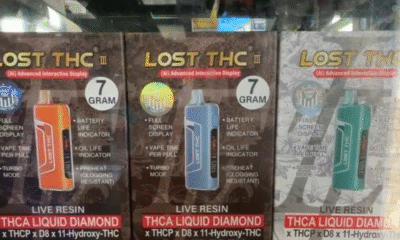

Mississippi AG takes aim at hemp products, including Delta THC | TN State News
-
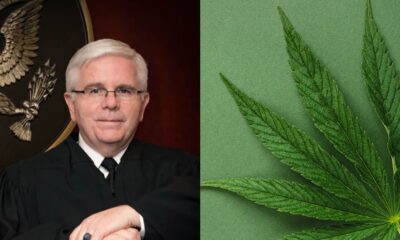

DEA Judge Overseeing Cannabis Rescheduling Hearing Set to Retire
-


North Mankato city council postpones decision on cannabis dispensary
-
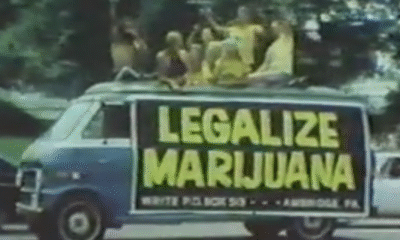

Marijuana Prohibition Is And Always Has Been A Sham
-
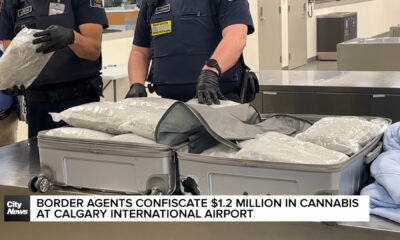

Border Agents confiscate $1.2 million in cannabis at Calgary International Airport
-


The best grow lights of 2025 by Leafly
featured
DEA Judge Overseeing Cannabis Rescheduling Hearing Set to Retire
Published
21 minutes agoon
July 23, 2025
The Drug Enforcement Administration (DEA) judge who was tasked with overseeing a Biden administration proposal to reschedule cannabis is set to retire on Aug. 1.
John J. Mulrooney II, the agency’s chief administrative law judge, notified the hearing’s designated participants on July 23 that he will no longer have jurisdiction over the case come the end of next week.
“My retirement will leave the DEA with no Administrative Law Judge to hear this matter or any of the Agency’s other pending administrative enforcement cases,” Mulrooney wrote. “The Controlled Substances Act requires that DEA administrative enforcement hearing proceedings must be conducted in accordance with the Administrative Procedure Act and presided over by an Administrative Law Judge.”
The current hearing process, to debate the merits of a proposal to reclassify cannabis from a Schedule I to a Schedule III drug under the Controlled Substances Act (CSA), has been stayed since Jan. 13, 2025, when Mulrooney granted an interlocutory appeal amid claims from pro-rescheduling parties that the DEA conducted improper communications with anti-rescheduling participants.
Mulrooney has retained limited jurisdiction over the case during the past six months to provide rulings on non-dispositive, procedural motions, such as certain participants dropping out of the process, and others seeking alternative counsel.
However, during the past six months, the hearing process has remained delayed in the absence of the DEA administrator fixing a briefing schedule to allow for the designated participants to weigh in on the matter, as Mooney ordered.
Derek S. Maltz was the DEA’s acting administrator from Jan. 21 until early May, when he stepped down, and Robert Murphy was the acting administrator until July 21, when the Senate confirmed President Donald Trump’s nominee, Terrance Cole, to head the agency.
That said, the fate of the hearing process is now in Cole’s hands.
“Until there is a change in this circumstance, all matters filed in this case will be forwarded to the DEA Administrator, for whatever action, if any, he deems appropriate,” Mulrooney wrote in his retirement announcement July 23. “All previously-issued procedural orders remain in full force and effect unless otherwise modified by a successor Administrative Law Judge, the DEA Administrator, or the Attorney General.”
Cole told U.S. senators during his April confirmation hearing that “it’ll be one of my first priorities” to review where the DEA is in the administrative process to reschedule cannabis upon being confirmed.
However, Cole provided no promises on the Schedule III proposal that was recommended by former President Joe Biden’s U.S. Department of Health and Human Services and published in the Federal Register after former Attorney General Merrick Garland signed off on a notice of proposed rulemaking. Biden’s DEA never backed the proposal.
While Mulrooney is retiring, his vacancy isn’t expected to further delay the cannabis rescheduling hearing process: That ball is currently in Cole’s court.
“Naturally, I wish all the parties the best in resolving this important issue in a fair, transparent, and accurate manner, and extend my heartfelt gratitude to the parties and their representatives for their sincere, diligent, and indefatigable advocacy,” Mulrooney wrote.
Mulrooney called attention to the DEA’s lack of transparency under the Biden administration early on in the hearing process, specifically pointing to former Administrator Anne Milgram’s secretive selection process for the 25 designated participants in October 2024.
It took a lawsuit from a party that was excluded from the process to shed light on the DEA selections. The lawsuit provided a record that the DEA sent “cure letters” to several anti-rescheduling entities, providing them the opportunity to submit supplemental information showing that they met the “interested person” status under the Administrative Procedure Act.
“The government’s failure to acknowledge in any way the gravity of the highest levels of its organization allegedly reaching out to help one of the potential DPs fortify its application to ease the task of justifying its apparently pre-made determination for appeal demonstrates an arrogant overconfidence that may not serve it well in the future,” Mulrooney wrote in his January order granting the interlocutory appeal.

Author: mscannabiz.com
MScannaBIZ for all you Mississippi Cannabis News and Information.
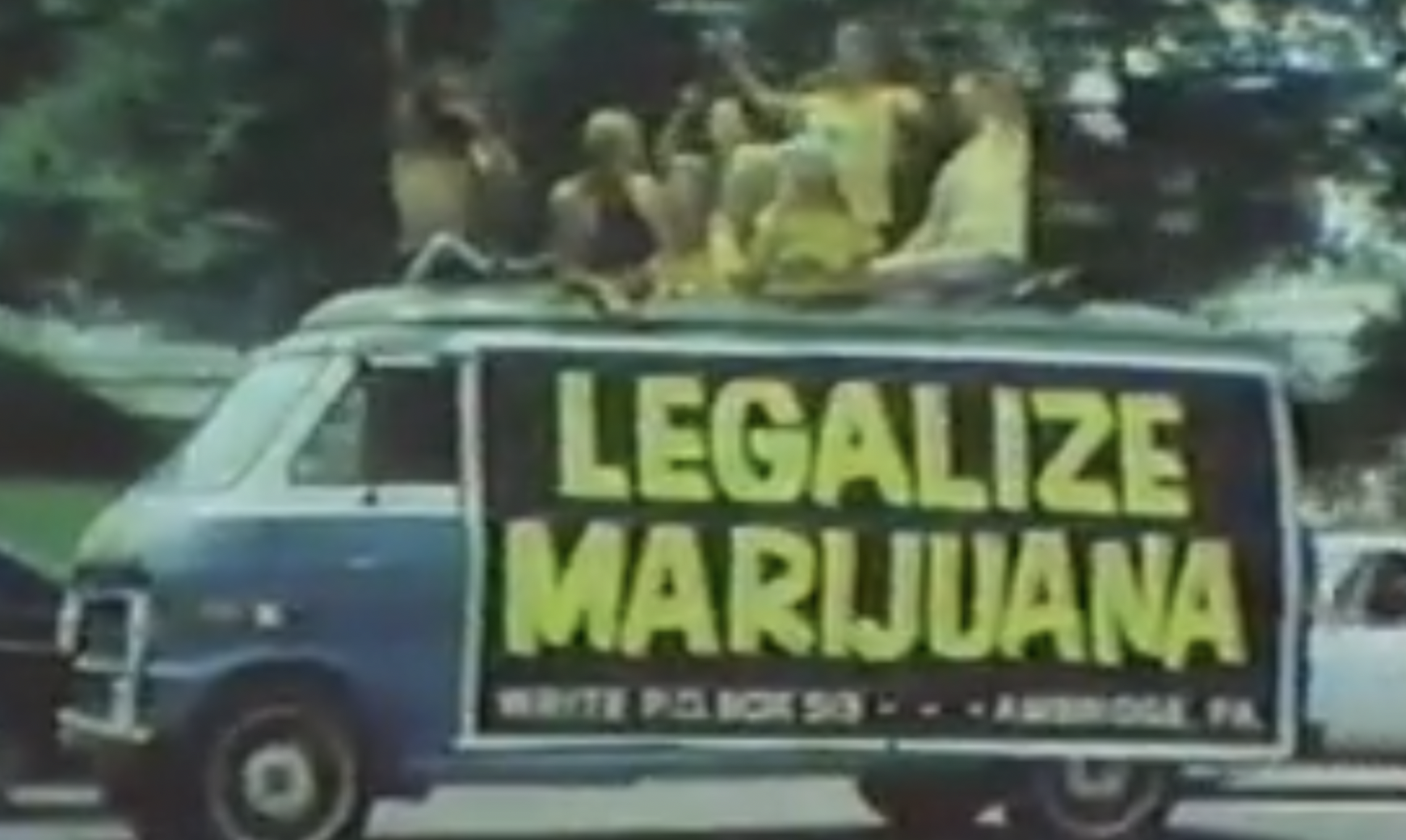
Since its inception, efforts to criminalize the marijuana plant and stigmatize those who consume it have been predicated almost entirely upon gross exaggerations, racial stereotypes, and outright lies.
The initial push for cannabis criminalization, which began in earnest more than a century ago, had little to do with promoting public health or safety. Instead, the decision to target and prosecute cannabis users was fueled by xenophobia and media sensationalism.
For instance, a July 6, 1927 story in the New York Times, headlined “Mexican Family Goes Insane,” farcically claimed: “A widow and her four children have been driven insane by eating the marihuana plant, according to doctors, who say there is no hope of saving the children’s lives and that the mother will be insane for the rest of her life.”
An academic paper titled “Marijuana,” published in 1933 in The Journal of Law and Criminology, similarly made over-the-top allegations about the plant’s supposed dangers. The authors wrote, “The inevitable result [of consuming cannabis] is insanity, which those familiar with it describe as absolutely incurable, and, without exception, ending in death.”
In 1937, Harry J. Anslinger — America’s first ‘Drug Czar’ — successfully lobbied Congress to ban cannabis nationwide. He did so through the continuous use of racist rhetoric. “There are 100,000 total marijuana smokers in the U.S., and most are Negroes, Hispanics, Filipinos, and entertainers. Their Satanic music, jazz and swing, result from marijuana use,” he asserted. “This marijuana causes white women to seek sexual relations with Negroes, entertainers, and any others.”
Fast-forward to 1971. That’s when the Nixon administration declared drug abuse to be “public enemy number one.” The lynchpin of this campaign was stamping out the use of marijuana, which Congress had just classified as a Schedule I controlled substance — the strictest federal category available. Yet, privately, Nixon acknowledged that he did not think cannabis was “particularly dangerous,” and he lamented the “ridiculous” penalties faced by those arrested for possessing it.
Nonetheless, his administration publicly doubled down on the mythical marijuana threat for its own political gain. As his domestic policy chief, John Ehrlichman, later acknowledged, “We couldn’t make it illegal to be either against the (Vietnam) war or Black,” but we could get “the public to associate the hippies with marijuana and Blacks with heroin.”
By “criminalizing both heavily,” Ehrlichman explained, “we could disrupt those communities. We could arrest their leaders, raid their homes, break up their meetings, and vilify them night after night on the evening news.”
“Did we know we were lying about the drugs?” he asked. “Of course we did.”
Fifty-plus years and nearly 30 million marijuana-related arrests later, cannabis remains categorized as a Schedule I controlled substance — the same classification as heroin — and many politicians and prohibitionists continue to reiterate many of these same myths. Yet, despite their claims, mounting evidence affirms that cannabis is not a ‘gateway drug,’ it doesn’t sap users’ motivation, it doesn’t make consumers violent, and it doesn’t make them crazy.
Slowly but surely, the public is learning and accepting the truth.
Survey data compiled by the Pew Research Center finds that only about one-in-ten Americans support the federal government’s blanket criminalization of marijuana. Moreover, according to Gallup, 70 percent of U.S. adults think “the use of marijuana should be legal.”
That’s an increase of 19 percentage points since 2014 when Colorado and Washington became the first states to implement adult-use cannabis legalization. Twenty-four states have now done so — and no state has ever repealed marijuana legalization. In short, the more familiar the public becomes with legalization through first-hand experience, the more they like it. And the less likely they are to believe longstanding prohibitionist rhetoric and lies.
After nearly a century of canna-bigotry, the truth couldn’t be clearer. Marijuana prohibition has been a fraud from the beginning — often propagated by politicians and bureaucrats who were in on the sham. It’s high time we end it.
Paul Armentano is the Deputy Director of the National Organization for the Reform of Marijuana Laws, America’s oldest cannabis consumers’ lobby. To become a member of NORML or to support NORML’s efforts, please consider making a donation here.
This article is from an external, unpaid contributor. It does not represent High Times’ reporting and has not been edited for content or accuracy.
Photo by PumpkinButter via WikiMedia Commons

Author: mscannabiz.com
MScannaBIZ for all you Mississippi Cannabis News and Information.
featured
Appeals Court Vacates Conviction Over Marijuana User’s Gun Ownership, Noting Lower Court Didn’t Find His Use Caused A Threat
Published
2 hours agoon
July 23, 2025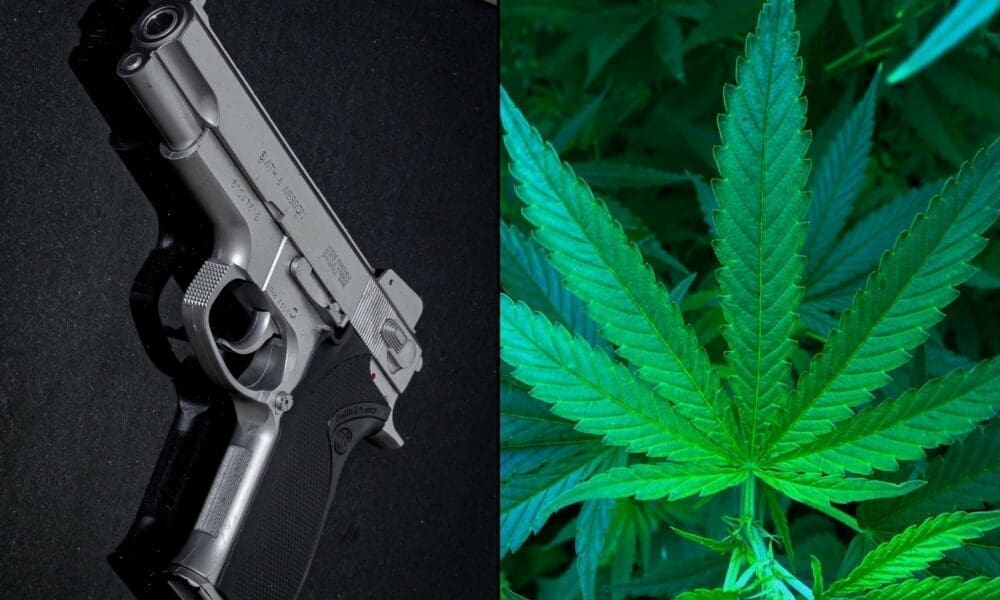
In yet another federal court ruling questioning the U.S. government’s blanket ban on firearm possession by marijuana users, an appeals court on Tuesday vacated a defendant’s conviction under the statute known as Section 922(g)(3) and remanded the case back to a district court, noting that a retrial before a jury may be necessary to determine whether cannabis in fact caused the defendant to be dangerous or pose a credible threat to others.
In a 14-page opinion, a three-judge panel for the U.S. Court of Appeals for the Eighth Circuit noted that after an Iowa district court initially decided the case, the appeals court issued new guidance in a February ruling that said the prohibition on gun ownership by drug users is justified only in certain circumstances—not always.
In returning the current case—U.S. v. Cordova Perez—to the Southern District of Iowa, judges said the lower court failed to make a determination as is now required in the Eighth Circuit as to whether defendant Aldo Ali Cordova Perez Jr.’s marijuana use made him a credible threat to public safety.
“The proper question is whether Cordova Perez’s marijuana use caused him to act in an outwardly erratic or aggressive manner that would, in context, be reasonably perceived as disturbing or dangerous to others,” says the opinion, written by Circuit Judge Jane L. Kelly, an Obama appointeee.
While the ruling says the district court “did not make any such causal finding in this case,” it suggests that establishing such a relationship might not necessarily require evidence that Cordova Perez’s cannabis made him violent or commit conduct with a gun specifically.
“If marijuana caused Cordova Perez to act or drive in an erratic way, for example, he might be disarmed constitutionally under § 922(g)(3) even if his outward behavior was not violent in the same way as, perhaps, the ‘combative hostility’ sometimes associated with ‘a drug like PCP,’” the opinion says.
“Even if Cordova Perez normally used marijuana without issue,” it adds, “marijuana could have triggered a single erratic or dangerous episode.”
Judges also said in the new opinion that the lower court’s decision in the case didn’t make any factual findings that the defendant’s “marijuana use—either that day or more broadly—caused him to ‘induce terror, or pose a credible threat to the physical safety of others with a firearm.’”
“Nor did the district court ask if Cordova Perez’s marijuana use placed him in a category of people ‘present[ing] a special danger of misuse’ sufficient to justify disarmament irrespective of any individualized showing of dangerousness,” the decision adds.
Such a finding would be necessary under current precedent requiring that to be constitutional, a statute restricting gun rights from a broad class of Americans must be sufficiently similar to historical restrictions, such as preventing firearm possession by people with mental illness.
“We have already held that without more, neither drug use generally nor marijuana use specifically automatically extinguishes an individual’s Second Amendment right,” the panel wrote, referencing Cooper, the Eight Circuit’s own ruling from February,
“Defining a class of drug users simply by the suggestion that they might sometimes be dangerous, without more, is insufficient for categorical disarmament,” judges added.
The new ruling says the district court, where matters of fact rather than law are decided, “is best positioned to reassess Cordova Perez’s as-applied challenge in light of Cooper“:
“Accordingly, we vacate the judgment and remand for the district court to determine—either individually or categorically, and either on the trial record or, to the extent necessary, via an evidentiary hearing—whether Cordova Perez’s marijuana use: 1) caused him to ‘act like someone who is both mentally ill and dangerous’; or 2) would or did make him ‘induce terror, or pose a credible threat to the physical safety of others with a firearm.’”
Further fact-finding to establish evidence of Cordova Perez’s relationship to marijuana might require a trial before a jury rather than a judge, it adds.
“As to any factual findings on remand, Cordova Perez raises a legitimate concern that the jury, not the judge, must resolve factual disputes necessary to sustain his conviction,” judges wrote, adding that “a retrial may be necessary.”
Notably, the new Eighth Circuit opinion appears to differ from a recent Third Circuit ruling in that the new decision says that not every application of 922(g)(3) “require[s] an individualized factual determination,” explaining that such determinations wouldn’t be necessary if the government could demonstrate that a particular drug made an entire class of users dangerous.
By contrast, the Third Circuit earlier this month said in a published opinion that district courts must make “individualized judgments” to determine whether 922(g)(3) is constitutional as applied to particular defendants.
The appeals panel ruled that while a person “need not have harmed someone, threatened harm, or otherwise acted dangerously to justify his disarmament,” the history of gun laws in the country requires that “district courts must make individualized judgments and conclude that disarming a drug user is needed to address a risk that he would pose a physical danger to others.”
Judges in that case noted that historical restrictions on gun ownership under “drunkenness and lunacy laws” in the U.S. “were still always based on an ‘individualized assessment’ rather than a categorical judgment.”
“Future courts considering §922(g)(3) challenges,” the Third Circuit added, “should also consider these factors in determining whether someone’s drug use suggests that he “likely poses an increased risk of physical danger to others if armed.”
A number of federal courts in recent months have cast doubt on the legality of § 922(g)(3), finding generally that while the ban on gun ownership among drug users may not be entirely unconstitutional, there’s scant historical precedent for such a broad restriction of Second Amendment rights on an entire a category of people.
As a recent report from the Congressional Research Service explained the current legal landscape, a growing number of federal courts are now “finding constitutional problems in the application of at least some parts” of the firearms prohibition.
The matter could soon be taken up by the U.S. Supreme Court. In a recent petition for review by justices, U.S. Solicitor General D. John Sauer argued that despite recent appeals court decisions calling the constitutionality of the firearms ban into question, the restriction is nevertheless lawful.
“Section 922(g)(3) complies with the Second Amendment,” the government’s filing in that case, U.S. v. Hemani, maintains. “That provision targets a category of persons who pose a clear danger of misusing firearms: habitual users of unlawful drugs.”
The federal statute “bars their possession of firearms only temporarily,” the government petition says, “and leaves it within their power to lift the restriction at any time; anyone who stops habitually using illegal drugs can resume possessing firearms.”
Notably, while the government mentioned “habitual” users of illegal drugs 40 times in its Supreme Court filing, the word does not itself appear in 922(g)(3). The language of the statute prohibits anyone “who is an unlawful user of or addicted to any controlled substance” from purchasing or possessing firearms or ammunition.
While DOJ is asking the high court to take up the Hemani case, at least two other, similar cases are waiting in the wings: U.S. v. Cooper and U.S. v. Baxter both of which also hinge on the constitutionality of 922(g)(3).
In Cooper, an Eighth Circuit U.S. Court of Appeals panel dismissed a three-year prison sentence against a person convicted for possession of a firearm while being an active user of marijuana. Judges in that case ruled that government’s prohibition on gun ownership by drug users is justified only in certain circumstances—not always.
“Nothing in our tradition allows disarmament simply because [the defendant] belongs to a category of people, drug users, that Congress has categorically deemed dangerous,” their ruling said.
In Baxter, the Eighth Circuit ruled 922(g)(3) unconstitutional as applied to the facts in the case.
Judges in that case wrote that there were insufficient factual findings in the record “for this Court to review Baxter’s as-applied Second Amendment challenge.” Nevertheless, the they wrote, “We reverse the district court’s ruling on Baxter’s as-applied Second Amendment challenge and remand to the district court for further proceedings consistent with this opinion.”
In recent weeks, the government has sought further time from the court to decide whether to seek an appeal in the other cases. And when DOJ filed its appeal in Cooper, it further asked the court to slow walk the case, requesting justices “hold the petition for a writ of certiorari pending the disposition of the petition in United States v. Hemani…and should then dispose of this petition as appropriate.”
One reason DOJ could be focused on the high court taking up Hemani in particular is that the defendant is not only a cannabis user but also a user of cocaine who’s sold drugs in the past, perhaps reasoning that he is a less sympathetic face of drug consumers’ gun rights. Defendants in the other cases were merely found in possession of both a firearm and marijuana.
If the Supreme Court takes up Hemani and declares 922(g)(3) constitutional, such a ruling could could mean government wins in the remaining cases.
One risk to the government appealing the lower court rulings are that if the Supreme Court does take the case, justices may in fact rule unfavorably to the government, possibly cementing that § 922(g)(3) is—in at least some cases—unconstitutional.
Earlier this year, a federal judge in Rhode Island ruled that the ban was unconstitutional as applied to two defendants, writing that the government failed to establish that the “sweeping” prohibition against gun ownership by marijuana users was grounded in historical precedent.
The Fifth Circuit’s Daniels ruling—in a three-judge panel ruled that the firearms ban was unconstitutional as applied—came on the heels of a string of other judicial decisions casting doubt on the legality of the ban.
A federal judge in El Paso, for instance, ruled late last year that the government’s ongoing ban on gun ownership by habitual marijuana users is unconstitutional in the case of a defendant who earlier pleaded guilty to the criminal charge. The court allowed the man to withdraw the plea and ordered that the indictment against him be dismissed.
Another panel of judges, on the U.S. Court of Appeals for the Tenth Circuit, heard oral arguments in November in the government’s appeal of a district court ruling that deemed the gun ban unconstitutional.
In a number of the ongoing cases, DOJ has argued that the prohibition on gun ownership by marijuana users is also supported by a recent U.S. Supreme Court decision, U.S. v. Rahimi, that upheld the government’s ability to limit the Second Amendment rights of people with domestic violence restraining orders.
DOJ has made such arguments, for example, in favor of the firearms ban in a case in a case in the U.S. Court of Appeals for the Eleventh Circuit. In that matter, a group of Florida medical cannabis patients contends that their Second Amendment rights are being violated because they cannot lawfully buy firearms so long as they are using cannabis as medicine, despite acting in compliance with state law.
DOJ under President Joe Biden consistently argued that medical marijuana patients who possess firearms “endanger public safety,” “pose a greater risk of suicide” and are more likely to commit crimes “to fund their drug habit.”
It remains unclear how the Trump administration will approach the cases. At a NRA conference in 2023, Trump suggested there might be a link between the use of “genetically engineered” marijuana and mass shootings. He listed a number of controversial and unproven factors that he said at the time he would direct the Food and Drug Administration (FDA) to investigate as possibly causing the ongoing scourge of mass shooting afflicting the country.
“We have to look at whether common psychiatric drugs, as well as genetically engineered cannabis and other narcotics, are causing psychotic breaks” that lead to gun violence, he said.
DOJ has claimed in multiple federal cases over the past several years that the statute banning cannabis consumers from owning or possessing guns is constitutional because it’s consistent with the nation’s history of disarming “dangerous” individuals.
In 2023, for example, the Justice Department told the U.S. Court of Appeals for the Third Circuit that historical precedent “comfortably” supports the restriction. Cannabis consumers with guns pose a unique danger to society, the Biden administration claimed, in part because they’re “unlikely” to store their weapon properly.
Last year, Biden’s son Hunter was convicted by a federal jury of violating statute by buying and possessing a gun while an active user of crack cocaine. Two Republican congressmen challenged the basis of that conviction, with one pointing out that there are “millions of marijuana users” who own guns but should not be prosecuted.
The situation has caused confusion among medical marijuana patients, state lawmakers and advocacy groups, among others. The National Rifle Association’s (NRA) lobbying arm said recently that the court rulings on the cannabis and guns issue have “led to a confusing regulatory landscape” that have impacted Americans’ Second Amendment rights.
“Marijuana use is no longer limited to the domain of indigenous religious customs or youth-oriented counterculture and now includes a wide variety of people who use it for medicinal or recreational reasons,” said the advocacy group, which does not have an official stance on cannabis policy generally. “Many of these individuals are otherwise law-abiding and productive members of their communities and want to exercise their right to keep and bear arms.”
Meanwhile, some states have passed their own laws either further restricting or attempting to preserve gun rights as they relate to marijuana. Recently a Pennsylvania lawmaker introduced a bill meant to remove state barriers to medical marijuana patients carrying firearms.
Colorado activists also attempted to qualify an initiative for November’s ballot that would have protected the Second Amendment rights of marijuana consumers in that state, but the campaign’s signature-gathering drive ultimately fell short.
As 2024 drew to a close, the ATF issued a warning to Kentucky residents that, if they choose to participate in the state’s medical marijuana program that’s set to launch imminently, they will be prohibited from buying or possessing firearms under federal law.
The official said that while people who already own firearms aren’t “expected to” turn them over if they become state-legal cannabis patients, those who “wish to follow federal law and not be in violation of it” must “make the decision to divest themselves of those firearms.”
Since then, bipartisan state lawmakers have introduced legislation that would urge Kentucky’s representatives in Congress to amend federal law to clarify that users of medical marijuana may legally possess firearms, though no action has since been taken on that bill.
Kentucky Gov. Andy Beshear (D) said in January that he supported the legislature’s effort to urge the state’s congressional delegation to call for federal reforms to protect the Second Amendment rights of medical marijuana patients, but the governor added that he’d like to see even more sweeping change on the federal level.
“I think the right way to deal with that is not just to focus on that issue, but to change the schedule of marijuana,” Beshear said at a press conference. “What we need to change is the overall marijuana policy by the federal government.”
Read the full Eighth Circuit opinion in U.S. v. Cordova Perez below:

Author: mscannabiz.com
MScannaBIZ for all you Mississippi Cannabis News and Information.

Mississippi AG takes aim at hemp products, including Delta THC | TN State News

DEA Judge Overseeing Cannabis Rescheduling Hearing Set to Retire

North Mankato city council postpones decision on cannabis dispensary

Marijuana Prohibition Is And Always Has Been A Sham

Border Agents confiscate $1.2 million in cannabis at Calgary International Airport

The best grow lights of 2025 by Leafly

Appeals Court Vacates Conviction Over Marijuana User’s Gun Ownership, Noting Lower Court Didn’t Find His Use Caused A Threat

Canada Border Services Agency intercepting more cannabis at Calgary International Airport

Good News About Parkinson’s Disease And Medical Marijuana

Cannabis beverages are booming as alcohol sales slump

NCIA’s Founding CEO Stepping Down After 15 Years
Did You Invest In The Old High Times?

Common council approves cannabis resolution

Rhode Island Pauses Licensing of Hemp Product Retailers

DEA Judge Overseeing Marijuana Rescheduling Retires, Leaving Fate Of Reform To Trump’s New Agency Head

Guess Who Is A Big Supporter Of Legalizing Marijuana

How much do states make from marijuana tax?

Texas Governor Clarifies Hemp THC Stance as Senate Committee Approves Ban

Cannabis industry faces federal roadblocks as states that legalize generate billions

The Tale of the Hippie Trail (2022)

Vaporized Cannabis Mitigates Migraine Symptoms

Total Massachusetts Adult-Use Cannabis Sales Have Surpassed $8 Billion

Oklahoma Marijuana Activists Plan Push To Put Legalization On Ballot Despite New Petioinining Restrictions

Trulieve Expands Distribution of Onward, Launches THC-Infused Energy Drink Upward

Alert: Department of Cannabis Control updates data dashboards with full data for 2023

Connecticut Appoints The US’s First Cannabis Ombudsperson – Yes there is a pun in there and I’m Sure Erin Kirk Is Going To Hear It More Than Once!

5 best CBD creams of 2024 by Leafly

EU initiative begins bid to open access to psychedelic therapies

Free delta-9 gummies from Bay Smokes
New Study Analyzes the Effects of THCV, CBD on Weight Loss

May 2024 Leafly HighLight: Pink Runtz strain

5 best autoflower seed banks of 2024 by Leafly

Curaleaf Start Process Of Getting Their Claws Into The UK’s National Health System – With Former MP (Resigned Today 30/5/24) As The Front Man

Mississippi city official pleads guilty to selling fake CBD products

Discover New York’s dankest cannabis brands [September 2024]

Horn Lake denies cannabis dispensary request to allow sale of drug paraphernalia and Sunday sales | News

Press Release: CANNRA Calls for Farm Bill to Clarify Existing State Authority to Regulate Hemp Products

Local medical cannabis dispensary reacts to MSDH pulling Rapid Analytics License – WLBT

Nevada CCB to Accept Applications for Cannabis Establishments in White Pine County – “Only one cultivation and one production license will be awarded in White Pine County”

5 best THC drinks of 2024 by Leafly

6 best CBD gummies of 2024 by Leafly

The Daily Hit: October 2, 2024

5 best delta-9 THC gummies of 2024 by Leafly

Weekly Update: Monday, May 13, 2024 including, New Guide for Renewals & May Board meeting application deadline

People In This State Googled ‘Medical Marijuana’ The Most, Study Shows

PRESS RELEASE : Justice Department Submits Proposed Regulation to Reschedule Marijuana

Thailand: Pro-cannabis advocates rally ahead of the government’s plan to recriminalize the plant

Press Release: May 9, STIIIZY and Healing Urban Barrios hosted an Expungement Clinic & Second Chance Resource Fair
Trending
-

 California Cannabis Updates1 year ago
California Cannabis Updates1 year agoAlert: Department of Cannabis Control updates data dashboards with full data for 2023
-

 Breaking News1 year ago
Breaking News1 year agoConnecticut Appoints The US’s First Cannabis Ombudsperson – Yes there is a pun in there and I’m Sure Erin Kirk Is Going To Hear It More Than Once!
-

 best list12 months ago
best list12 months ago5 best CBD creams of 2024 by Leafly
-

 Business10 months ago
Business10 months agoEU initiative begins bid to open access to psychedelic therapies
-

 Bay Smokes1 year ago
Bay Smokes1 year agoFree delta-9 gummies from Bay Smokes
-

 cbd1 year ago
cbd1 year agoNew Study Analyzes the Effects of THCV, CBD on Weight Loss
-

 California1 year ago
California1 year agoMay 2024 Leafly HighLight: Pink Runtz strain
-

 autoflower seeds10 months ago
autoflower seeds10 months ago5 best autoflower seed banks of 2024 by Leafly




